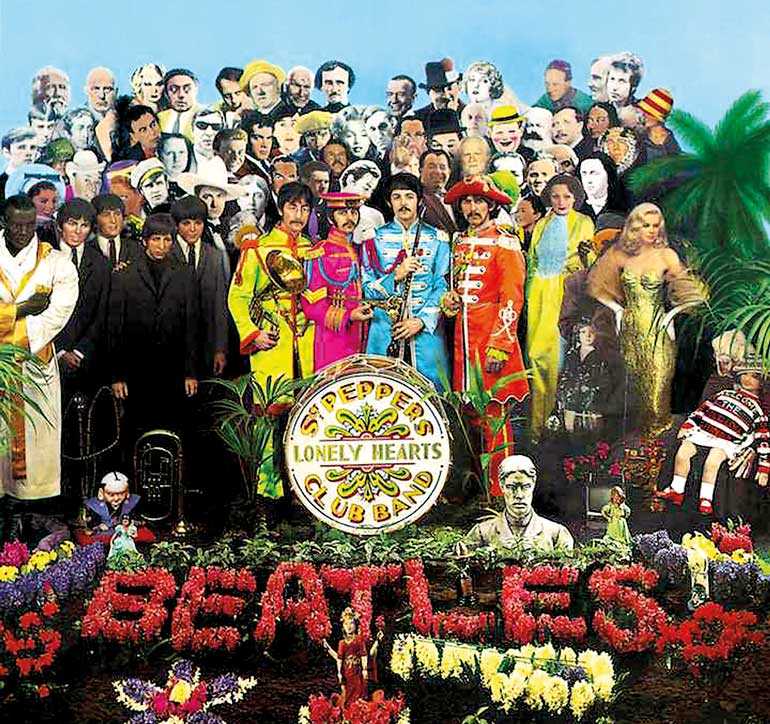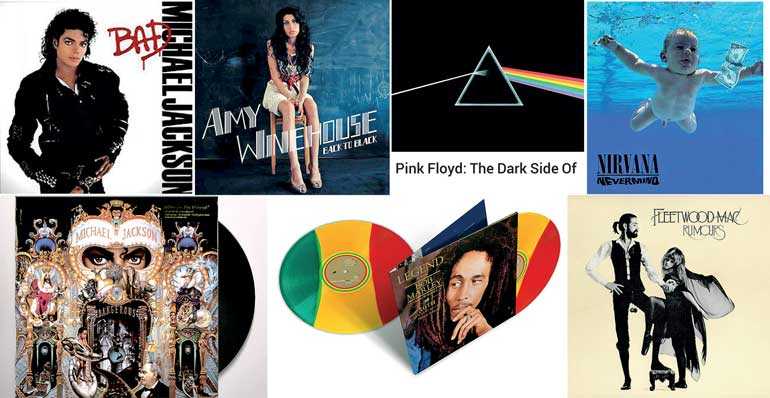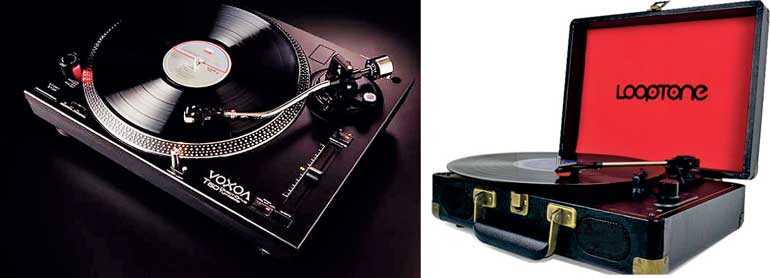Monday Apr 21, 2025
Monday Apr 21, 2025
Tuesday, 12 March 2019 00:00 - - {{hitsCtrl.values.hits}}

There really is no school like the old school, proven by the wave of nostalgia that seems to be gripping modern culture. In movies, fashion, music, design, even spirituality – shades from yesteryear are making a comeback among the globalised generation, with people looking for forgotten jewels in a bid to assert their individuality. One such revived cultural artefact is the vinyl record, which saw a sharp decline as technology brought newer music formats to the forefront, but whose popularity is back on the rise around the world and on our island.
The medium, which was once the staple format for music consumption, is now seen as more of a premium item. Where artists once tried to fit all their material onto a single LP inside a thin sleeve, records now often come in fatter double- or even triple-disc packages, appealing more to collectors and audiophiles rather than casual fans.
Still, this group has shown considerable enough buying power to bring the medium back to life, with vinyl-exclusive parties and DJs preaching the format’s superiority to the masses. Vinyl Revival parties happen in Colombo, too, with a vibrant community of buyers and vendors in attendance to share their love for the sleek black disc.

One such vendor is ‘Zeppelin Records’, a company with a 35-year history in Sri Lanka, whose founder, Jomo Uduman, is a music aficionado with uncompromising principles when it comes to quality. The parent firm he heads, Zeppelin Advertising Services Ltd., which specialises in corporate gifts, has built a reputation for dealing in strictly high-end custom-crafted items; a standard of excellence he also adheres to with the music collection he offers through Zeppelin Records.
In fact, the argument for vinyl very often comes down to the quality of the sound, and equally often, is rebutted by the claim that only a well-honed ear could tell the difference between vinyl and a high-fidelity digital recording. And yet, the warmth and crackle that characterise analogue records is still sought after by music producers today in an effort to give their music that extra bit of soul; something that was almost polished away in the glossy, blemish-free sheen of the digital medium.
But vinyl’s appeal of being ‘real’ goes beyond the sound quality it promises. It is also ‘real’ in a tangible sense. Compared to CDs – which are themselves outdated – vinyl records are pretty large and come in decorated sleeves, often stuffed with liner notes that unveil additional layers to the songs and the artists behind them, fostering a deeper connection between artist and audience.
For instance, the liner notes to the iconic Beatles album, ‘Sgt. Pepper’s Lonely Hearts Club Band’, gave fans an insight into the recording process that went into making it, in addition to the lyrics and comments by the artists and producers. Meanwhile, the album’s cover itself was hailed as a pop-art masterpiece that raised the aesthetic value of record sleeves, turning them into collectibles for display.

At a time when entire libraries of music can be stuffed onto speck-sized memory cards or accessed via the omniscient cloud, vinyl brings a solid, physical presence to a music collection. Records and turntables take up considerable space; playing a song requires more effort than a tap on a screen; and the ability to skip from one song to the next becomes a skill in itself.
Foregoing all that convenience might seem counter-intuitive to enjoying the music, but this is part of what draws music lovers towards vinyl. Flipping through a crate of records, pulling the chosen disc out of its sleeve, carefully placing it on the turntable, setting the needle down and then letting the entire record play to completion – this seemingly-arduous ritual requires listeners to fully commit to what they’re consuming.
It prizes quality over quantity, some would say, but good things don’t come cheap. Especially during vinyl’s heyday, making record purchases was often a gamble, since previewing the content of records was difficult. This was even more so when it came to less-popular artists.
Today, streaming services allow subscribers to effortlessly discover infinite hours of new music for throwaway monthly fees, but there is a catch: subscribers rarely own the music they listen to. It’s literally a library membership – you can read all you want, but none of the books are yours.
Purchasing a record, on the other hand, allows a sense of ownership; the feeling that you’ve supported the artist in purchasing a piece of art, and rightfully so. A study by a former music-app partnerships head at Google revealed that, for the average independent artist, a single vinyl record purchase is worth 25,000 views on YouTube, or roughly 10 days of non-stop streaming on Spotify. Though the numbers are only estimates, it’s no secret that the streaming model’s payment system has left artists’ feathers ruffled, giving them greater exposure at the cost of lower pay-outs.
Granted, getting into vinyl requires a sense of commitment, especially considering the investment required to purchase a turntable and a set of records. But vendors are doing their best to encourage migration to the format. For instance, Zeppelin Records offers turntables and records on a 30-month, zero-interest instalment basis for Sampath cardholders, making it easier for those eager to start their own collection.
Vinyl isn’t just a medium for connecting with lesser-known artists and rediscovering gems from a bygone era though; it’s resurgence in popularity has also caught the eye of mainstream artists. Thumbing through one of the crates at Zeppelin, for instance, you’ll see contemporary records like Ed Sheeran’s ‘Divide’ and Coldplay’s ‘A Head Full of Dreams’ sitting beside classics like Bob Marley’s ‘Legend’ and Pink Floyd’s ‘Dark Side of the Moon’.
The format isn’t above co-opting technology to make things more convenient though. The modern turntables on offer at Zeppelin Records come with features that make them more appealing to the millennial crowd, such as portable briefcase-sized units with Bluetooth connectivity and USB functionality. They also have amps and speakers available to ensure getting top-notch output, whether the records are being played in a quiet bedroom or a chatter-buzzing hall.
Video might have killed the radio star, but it looks like vinyl weathered the storm of cassettes, CDs, mp3s and streaming services, just to see a resurgence propelled by its competitors. Sure, it’s easy to dismiss the new wave of vinyl record fanatics as just a bunch of hipsters riding a trend, but in an era when discovering and consuming music has become easier than ever – some would say too easy – the medium has given the digital generation a way to better appreciate their music, while the old guard rejoices at the chance to set the needle back on their glory days.
Discover Kapruka, the leading online shopping platform in Sri Lanka, where you can conveniently send Gifts and Flowers to your loved ones for any event including Valentine ’s Day. Explore a wide range of popular Shopping Categories on Kapruka, including Toys, Groceries, Electronics, Birthday Cakes, Fruits, Chocolates, Flower Bouquets, Clothing, Watches, Lingerie, Gift Sets and Jewellery. Also if you’re interested in selling with Kapruka, Partner Central by Kapruka is the best solution to start with. Moreover, through Kapruka Global Shop, you can also enjoy the convenience of purchasing products from renowned platforms like Amazon and eBay and have them delivered to Sri Lanka.
Discover Kapruka, the leading online shopping platform in Sri Lanka, where you can conveniently send Gifts and Flowers to your loved ones for any event including Valentine ’s Day. Explore a wide range of popular Shopping Categories on Kapruka, including Toys, Groceries, Electronics, Birthday Cakes, Fruits, Chocolates, Flower Bouquets, Clothing, Watches, Lingerie, Gift Sets and Jewellery. Also if you’re interested in selling with Kapruka, Partner Central by Kapruka is the best solution to start with. Moreover, through Kapruka Global Shop, you can also enjoy the convenience of purchasing products from renowned platforms like Amazon and eBay and have them delivered to Sri Lanka.